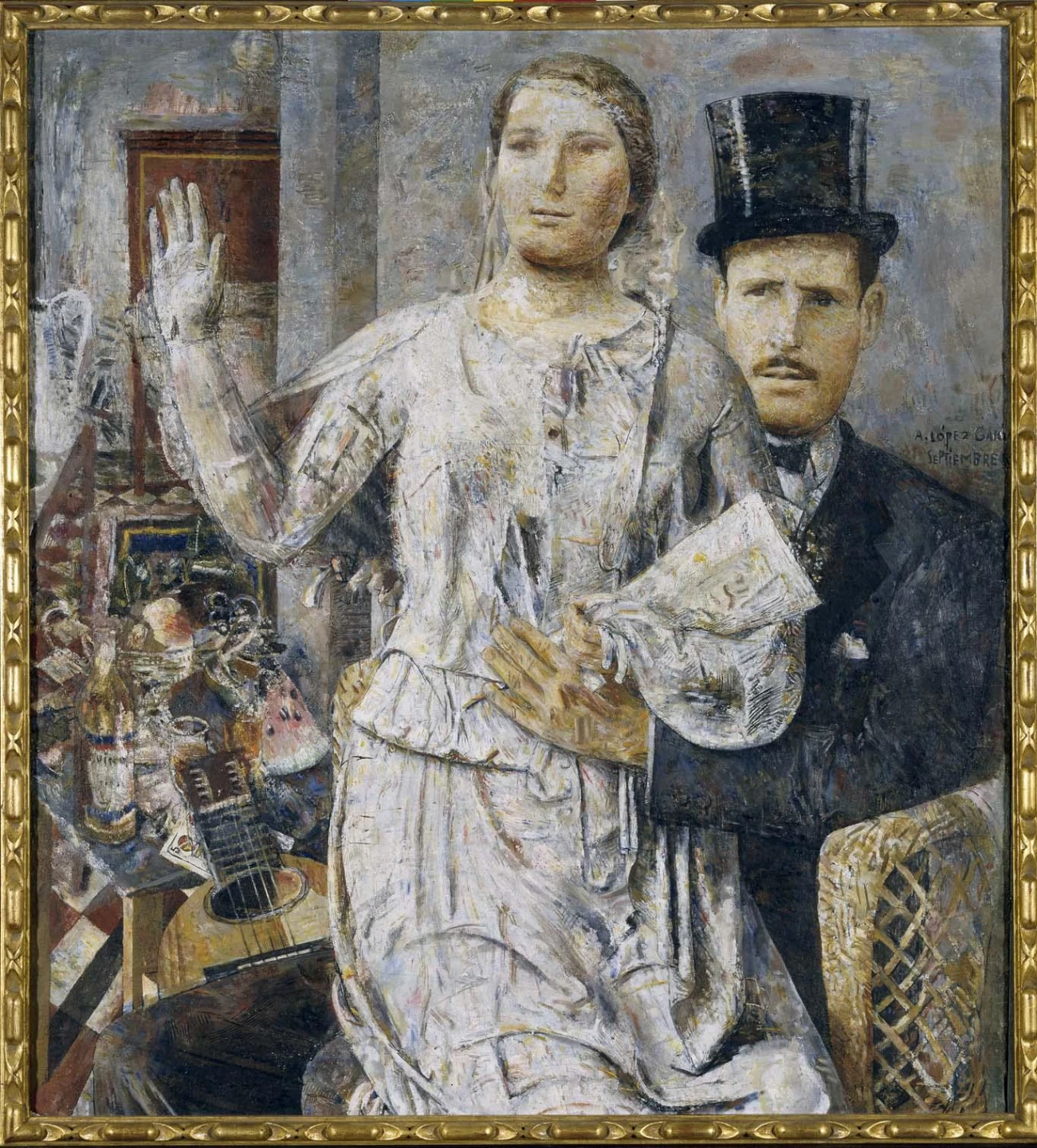Antonio López. Pintura, escultura, dibujo

<p></p>
In the interim, there is the final stage of his schooling, shaped by his travels to Italy and Greece in 1955, in which his figures become more full-bodied and gain more prominence, as symbolised by the double portraits Antonio y Carmen (1956) and Mis padres (1956) and the charcoal drawing Cuatro mujeres (1957). At the same time he begins a series of paintings characterised by their own quirks, a certain perversion of reality in the Surrealist sense, and, as in Campo del moro (1960), the subject of floating women. The emblematic works of the time are La niña muerta (1957) and Atocha (1964), whereby López builds his compositions around the metaphors of the dépaysement réflechi (reflexive disorientation) phenomenon, which, according to the exhibition's curator, Paloma Esteban: “Are based on space reflecting perfectly logical strange objects inside or outside their established context,” yet the air of mystery is still present in his later works.
Inch by inch his painting becomes more austere, both thematically and in the use of pictorial materials, opting for a range of mostly warm colours and light. This, together with his meticulous and painstaking approach to painting, makes it impossible to classify the essence of his work in simplistic terms. It does not fall under Hyperrealist expression, in fact the opposite is true, as his numerous portraits and multiple views of Madrid - panoramic or at street level - or his pieces containing trees, flowers, and fruits, attempt to capture the eternal nature of the moment and suspend it in time. Paradoxically, his inclination towards urban landscapes make him one of the most preeminent witnesses of the changing faces and transformations of the city throughout its most recent past.
Organised by
Museo Nacional Centro de Arte Reina Sofía
Image gallery
